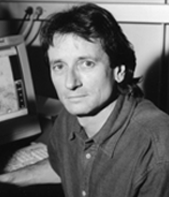
UCSD Researchers Make Paralyzed Rats Move Again
 Approximately 11,000 Americans become paralyzed from spinal cord injuries each year with little hope for recovery. But new research from the University of California at San Diego saw some promising results.
Approximately 11,000 Americans become paralyzed from spinal cord injuries each year with little hope for recovery. But new research from the University of California at San Diego saw some promising results.
The research team, led by MBF Bioscience customer Dr. Mark Tuszynski and Dr. Paul Lu saw movement in paralyzed rats after grafting a gel containing neural stem cells to the rats’ injured spinal cords. According to an article in The San Diego Union-Tribune, the process resulted in the growth of tens of thousands of new axons. These axons were “remarkably longer” than those scientists had seen in previous studies, and ventured beyond the injured area to form new synapses and restore communication with the brain. The rats regained “some power in their joints and were able to move around to a limited degree,” according to the article.
In their abstract, the authors report: “Properties intrinsic to early-stage neurons can overcome the inhibitory milieu of the injured adult spinal cord to mount remarkable axonal growth, resulting in formation of new relay circuits that significantly improve function.”
Dr. Tuszynski’s lab at the UCSD Center for Neural Repair is conducting experiments now to see if their results will translate to humans.
Read the article in The San Diego Union-Tribune, and access the paper “Long-Distance Growth and Connectivity of Neural Stem Cells after Severe Spinal Cord Injury” in the journal Cell to find out more about the study.
{Paul Lu, Yaozhi Wang, Lori Graham, Karla McHale, Mingyong Gao, Di Wu, John Brock, Armin Blesch, Ephron S. Rosenzweig, Leif A. Havton, Binhai Zheng, James M. Conner, Martin Marsala, Mark H. Tuszynski “Long-Distance Growth and Connectivity of Neural Stem Cells after Severe Spinal Cord Injury” Cell, Volume 150, Issue 6, 14 September 2012, Pages 1264–1273}
Photo of Dr. Tuszynski courtesy of the University of California at San Diego.


